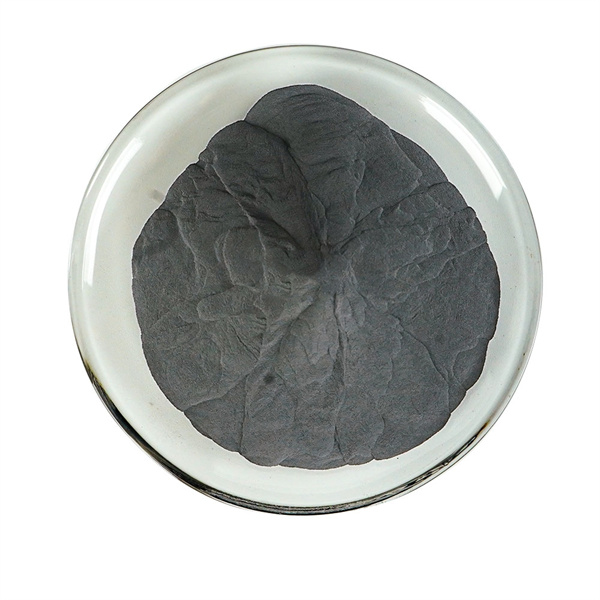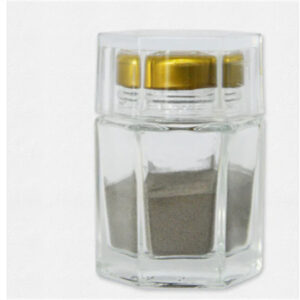Peralatan penyemprot gas menghasilkan serbuk logam berbentuk bola halus dengan distribusi ukuran partikel yang terkendali yang sangat penting di seluruh logam AM, semprotan termal, MIM, dan aplikasi metalurgi serbuk lainnya. Panduan ini mencakup prinsip-prinsip proses, jenis alat penyemprot, komponen sistem, parameter operasi, produsen, dan penilaian komparatif.
Peralatan penyemprot gas Gambaran Umum Proses
Atomisasi gas menggunakan energi kinetik dari semburan gas berkecepatan tinggi untuk memecah aliran logam cair menjadi tetesan-tetesan halus yang dengan cepat mengeras menjadi bubuk:
| Prinsip | Pecahnya aliran logam menjadi tetesan halus akibat benturan gas |
| Jenis gas | Nitrogen, Argon |
| Jenis logam | Paduan Nikel, Besi, Kobalt |
| Timbangan | Lab, Pilot, Industri |
| Atribut bubuk | PSD terkendali, Kebulatan tinggi, Keseragaman kimia permukaan |
| Ukuran partikel | 3 mikron hingga 120 mikron |
| Produk | Serbuk paduan, paduan utama |
| Industri | Logam AM, MIM, Pelapis |
Serbuk yang dikabutkan dengan gas menawarkan kontrol properti yang tepat tetapi membutuhkan investasi modal yang lebih tinggi daripada teknik atomisasi lainnya.

Peralatan penyemprot gas Jenis
| Alat penyemprot | Detail |
|---|---|
| Berpasangan dekat | Integrasi nozzle dan gas memungkinkan serbuk 20 mikron yang sangat halus |
| Jatuh bebas | Aliran logam cair jatuh melalui ruang gas untuk operasi tanpa penyangga |
| Putar | Performa yang andal untuk baja paduan tinggi melalui tabung tuang logam yang berputar |
Desain yang Muncul
Atomisasi kluster multi-nozzle dan alat penyemprot sentrifugal meningkatkan produktivitas. Atomisasi ultrasonik dan alat penyemprot gas induksi elektroda menyederhanakan produksi serbuk jatuh bebas.
Komponen Sistem
Modul utama dalam sistem atomisasi gas industri yang lengkap meliputi:
| Komponen | Peran |
|---|---|
| Tungku peleburan | Peleburan logam secara induksi ke kondisi super panas |
| Perakitan nosel | Mengontrol injeksi aliran logam cair ke dalam ruang gas |
| Kontrol gas | Mengatur jenis gas, tekanan, dan dinamika aliran |
| Pemadatan tetesan | Pendinginan cepat mengubah tetesan menjadi bubuk |
| Sistem pengumpulan | Pengayakan memisahkan bubuk berdasarkan ukuran partikel |
| Baghouse | Menangkap partikel yang dipadatkan dengan sangat halus dari knalpot gas |
| Daur ulang | Memasukkan kembali gas yang tidak terpakai dan partikel yang terlalu besar |
Pemantauan yang tepat dan kontrol umpan balik yang terintegrasi secara ketat di antara modul-modul di atas sangat penting untuk konsistensi kualitas bubuk.
Parameter Proses
| Parameter | Kisaran Khas | Dampak |
|---|---|---|
| Suhu logam | Panas super 30-100 ° C | Fluiditas, oksidasi permukaan |
| Ukuran lubang nosel | 2mm-6mm | Ukuran tetesan, dinamika aliran |
| Jenis gas | N2, Ar | Laju pendinginan, kimia permukaan |
| Tekanan gas | 5-15 tongkang | Distribusi ukuran partikel |
| Laju aliran gas | 0,1-3 m3/menit | Efisiensi dan hasil atomisasi |
| Ketinggian jatuh | 2-10m | Waktu pemadatan dan karakteristik bubuk |
Hubungan yang saling bergantung di antara parameter-parameter ini memerlukan pengoptimalan empiris yang dipandu oleh model komputasi untuk mencapai kebutuhan bubuk.
Peralatan penyemprot gas Pemasok
| Perusahaan | Rentang Kapasitas | Perkiraan Biaya |
|---|---|---|
| AP&C | 10kg/jam - 300kg/jam | $750.000-$4 juta |
| PSI | 25kg/jam - 500kg/jam | $950.000-$6 juta |
| Gasbarre | 50kg/jam - 1000kg/jam | $1,2 juta - $8 juta |
| Grup Buhler | 500kg/jam - 35.000kg/jam | $6 juta+ |
Skala produksi yang lebih besar membawa label harga yang jauh lebih tinggi. Diperlukan rekayasa khusus yang signifikan.
Penilaian Komparatif
| Alat Penyemprot Berpasangan Dekat | Alat Penyemprot Jatuh Bebas | |
|---|---|---|
| Biaya investasi | Tinggi | Sedang |
| Kompleksitas | Tinggi - Desain gas nosel terintegrasi | Sedang - Komponen yang dipisahkan |
| Pemeliharaan | Menantang - Penanganan seluruh kapal | Lebih mudah - Komponen modular |
| Produktivitas untuk serbuk halus | Lebih tinggi | Sedang |
| Fleksibilitas material | Sedang - Dibatasi oleh risiko penyumbatan nosel | Arsitektur terbuka yang tinggi |
| Pemantauan proses | Kontrol proses yang ketat diaktifkan | Lebih mengandalkan karakterisasi |
Hal-hal Penting yang Dapat Dipetik
- Rekayasa partikel presisi dengan fleksibilitas yang luas membuat atomisasi gas menjadi teknik yang kuat namun mahal
- Pemodelan dan pemantauan terintegrasi memungkinkan serbuk berkualitas dengan spesifikasi yang sempit
- Skalabilitas tetap menjadi batasan utama pada alat penyemprot gas kecil, menengah, dan besar

Pertanyaan Umum
T: Berapa ukuran sistem atomisasi gas yang paling sesuai untuk kebutuhan serbuk AM logam?
J: Alat penyemprot laboratorium benchtop dari skala 1-5kg/jam sesuai untuk R&D. Untuk produksi AM logam komersial, alat penyemprot 50-200kg/jam menyeimbangkan hasil, biaya, dan kebutuhan kualitas bubuk.
T: Tekanan gas apa yang biasanya digunakan dalam atomisasi?
J: Sebagian besar atomisasi gas bergantung pada tekanan dari 5-12 tongkang. Tekanan yang lebih tinggi memfasilitasi serbuk yang lebih halus tetapi membutuhkan bejana yang lebih berat. Argon memungkinkan ekstraksi panas lebih cepat daripada nitrogen.
T: Seberapa kecil ukuran partikel alat penyemprot gas dapat dicapai?
J: Alat penyemprot nosel berpasangan tertutup terdepan telah menunjukkan produksi serbuk logam yang konsisten mendekati 15-20 mikron sambil tetap mempertahankan persentase hasil yang wajar.
T: Logam apa yang tidak cocok untuk atomisasi gas?
J: Paduan yang sangat reaktif seperti paduan titanium dan aluminium menimbulkan tantangan oksidasi dan risiko penyumbatan nosel. Peleburan tengkorak induksi membantu meringankan masalah ini.




